|
|
|
National Parks in Thailand
|
Thailand is recognized as one of the most fertile
countries in the world, so it is not surprising to hear
people say that visiting Thailand, must combine exploring its
national parks, in the tour program.
The United States declared Yellow Stone as the first
national park in the world in 1872. Nine decades later, in
1962. Thailand declared Khao Yai its first national park.
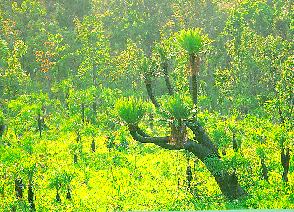
Standing at one thousand, three hundred and fifty
meters above sea level, Khao Yai consists oi several types
of forest and might be compared to a large book, which
people use to study nature. It is rich in numerous species of
wildlife, ranging from small animals, like the mouse deer, to
big ones like wild elephant, as well as more than
three hundred species of birds.
The declaration of natural parks in Thailand has not
only promoted forest preservation, but has changed the
form of forest tours in Thailand from animal hunting to
appreciation of natural beauty and wildlife. It has also
encouraged people to closely study and have a better
understanding of nature. Granted "National Park" status, so
far, are eighty-one parks in Thailand.

Because Thailand's geographical features are
diverse, its natural parks, in each area, are distinctive and
interesting, The north is a mountainous region; therefore,
national parks there are unique with dense fogs and a
relatively cold climate, especially during November-February.
For example, Doi Inthanon National Park, in
Chiang Mai Province, stands over two thousand five hundred meters
above sea level with its peak hidden in dense fog most of the time.
Apart from high mountain ranges, national parks in the north also consist
of large wide plains and tush forest areas, as can be seen from
Thung Salaeng Luang
National Park in Phitsanulok Province.

Then we have the central and western regions, which are notable for
magnificent waterfalls and caves. Besides Khao Yal, there are many interesting
national parks such as Erawan National Park
in Kanchanaburi Province. This
park is famous for the Erawan Waterfall, with its seven-tier cascade flowing
through limestone layers with splendid stalactites and stalagmites.
Another famous park in this area is Kaeng Krachan National Park in
Phetchaburi Province, covering a forest area of 720,000 acres, the largest one of
all in Thailand. It consists of a lake formed from the construction of the
Kaeng Krachan Dam to block the Phetchaburi River.
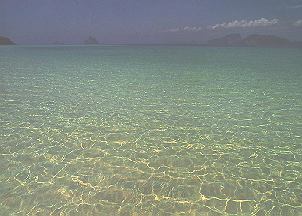
Now we can turn our attention to the northeast; an arid region
characterized by undulating hills. The most popular
national park in this region is Phu Kradung in Loei Province.
The charms of Phu Kradung are its height, which is a
challenge to travelers, magnificent grasslands in mist, a
cool climate, and picturesque cliffs at sunset. In the early
part of the cool season, maple leaves at the national park
change from green to red, adding a colorful dimension to
Phu Kradung
The Northeastern region also features traces of
living beings from bygone times including dinosaurs.
Traces are found mainly at Phuwiang National Park in
Khon Kaen Province. Phuwiang is located on the Korat
Plateau where each limestone accumulation dates back
over one hundred and thirty million years. The remains of
dinosaurs provide eloquent testimony to the age-old
civilization of Northeastern Thailand.
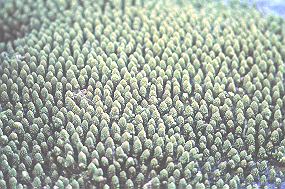
We now turn to the southern region; a mountainous
part of Thailand with a humid climate. This is where we
find Khao Luang National Park in
">Nakhon Si Thammarat Province with Khao Luang (Great Mountain) rising to over
one thousand eight hundred meters above sea level.
This is the highest peak in southern Thailand, connected
to the Banthad Mountain Range. Its underwater nature is
said to be among the most beautiful in the world. To
preserve its undersea natural beauty,
Thailand has declared areas from the
Gulf of Thailand to the Andaman Sea
as marine national parks,
Each marine national park has
its own identity and tourists can lake
their choice. For example, Mu Koh Chang National Park in
Trat Province
comprises more than fifty islands and
islets. This is the largest archipelago
in Thailand regarded as a paradise
for those who enjoy fishing and diving
to view coral reels in this part oi the country.
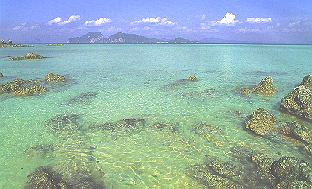
To explore an "onshore sea" or a splendid lake in
trie middle of a mountain, tourists should visit
Mu Koh Ang Thong National Park in
Surat Thani Province. This marine
park boasts fantastic beaches and coral reefs to welcome
all tourists.
The internationally famous beach resort of Phuket
also boasts the Hat Nai Yang National Park noted for its
spectacular coral reefs. This national park encompasses a
long while beach of thirteen kilometers where sea turtles
lay their eggs between November and February each year.
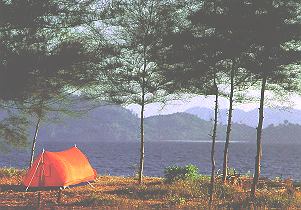
From Phuket, we can move towards Krabi Province
to explore the Hat Noppharat Thara - Mu Koh Phi Phi National
Park so well known among foreign visitors. Of interest in
this area is Susan Hoi or Shell Cemetery Beach with a
fossil dating back seventy-five million years. There are
only three fossils of this kind in the world: the other two being
found in the United States and Japan.
Concluding our visit to the national parks of Thailand.
we drop by Tarutao Marine National Park in the southern
province of Satun.
Today, it is not difficult to access all the national
parks in Thailand. All of them are equipped with various
amenities and facilities such as accommodation, tents,
toilets, restaurants, and trekking trails for nature studies,
security units, and tourism service centers. If you love
areas of undisturbed nature, national parks present you
with an excellent opportunity to fulfil your dreams through
a wide choice of eco and adventure tourism excursions tor
the holiday-minded naturalists.
| | |
|
|